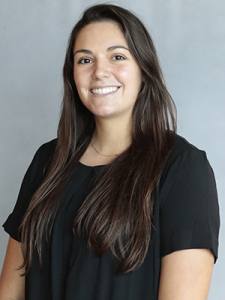Austin ISD Superintendent Paul Cruz was joined by superintendents from El Paso and Orange County, Florida, at SXSW EDU to discuss a model of foreign language instruction that splits instructional time evenly between English and an additional language.
Currently Austin ISD offers Two-Way Dual Language programs in Spanish and Vietnamese and One-Way Dual Language programs in Spanish at participating schools. Two-way programs are programs in which native speakers of Spanish or another chosen language for the program take the class alongside native English speakers as the students learn both languages simultaneously. One-Way Dual Language programs are recommended only for non-native English speakers but emphasize fluency in both the student’s native language and English.
One of the reasons administrators—like panelist and El Paso ISD Superintendent Juan Cabrera—advocate for this type of language instruction is to remove stigmas surrounding English as a Second Language, or ESL, classes and promote pride in native languages.
“All [of a] sudden you get a young kid that doesn't speak English proud to share with their English-speaking classmate their language, and when they teach each other languages they can learn much much more quickly,” Cabrera said.
Dual language programs are considered more effective than Sheltered bilingual programs, which focus only on teaching non-native English speakers how to speak English, said Barbara Jenkins, superintendent of Orange County School District in Central Florida.
“Our [English Language Learner] graduation rate over the last four years has gone from 62.4 percent to 75.1 percent in Central Florida in Orange County, and that outpaces all the other urban school districts,” Jenkins said.
Cruz said he has seen a positive response to these programs in AISD schools. While non-native English speakers get priority enrollment in the programs, additional space is open to a waiting list of native English speakers. The programs have been introduced in phases at schools within the district that expressed interest in becoming early adopters. Cruz said the language program has even fueled enrollment increases in schools at risk of shuttering.
“There were a couple of schools that were under-enrolled at one time or even set for closure, but their way around was the Two-Way Dual Language program.,” Cruz said. “When I would visit and have conferences and meetings about our [Two-Way Dual Language] program, our parents would come in. They would see that there's so much passion there. Those schools are now over-enrolled.”
Still, with the merits of the programs becoming popular among parents, implementation of them presents challenges for school districts. In many of these districts, students whose native languages are not offered in a dual language program must participate in a Sheltered bilingual program.
Jenkins said she faced this problem in her school district, where a large portion of her English Language Learner Students speak Haitian-Creole as their native language. That is the next dual language program the school district plans to implement, she said.
Another issue school districts face is the funding for professional development training to equip teachers with the skills necessary to teach a dual language course. Even in school districts such as El Paso, where administrators do not have trouble finding bilingual teachers, the specific training required to certify them as dual language teachers costs the district money, Cabrera said. He said he hopes lawmakers will see an investment in these types of programs as an investment in the economy.
“I want to solve the English Language Learner [achievement gap] problem, but I want to approach it from the cognitive differentiators that are in learning more than one language and the economic benefit to all American children irrespective of their race, color, creed or where they come from,” Cabrera said.
Cruz said the value of the program lies in its additive approach to learning for non-native English speakers. It is an opportunity to develop English language skills at a young age while celebrating and building on a child’s native language knowledge.
“It's about bilingualism, biculturalism and biliteracy,” Cruz said.





